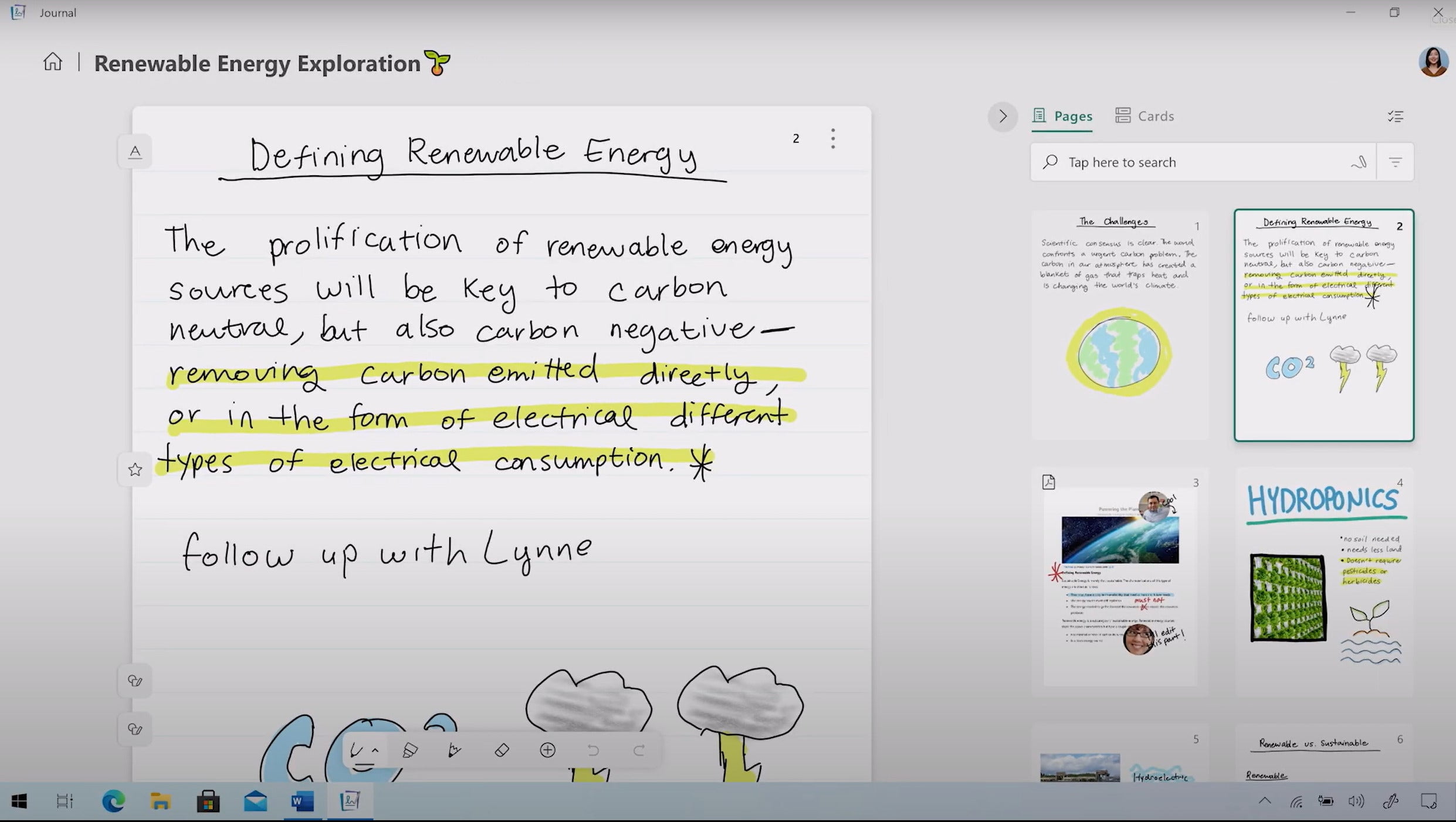
Journal is not only a new Microsoft app, it’s a new Windows app. This week, Microsoft released Microsoft Journal in the Windows 11 style with all new colors and materials. This new release rolls out between April 5th and April 8th, Microsoft said. If you want it now, get it from the Microsoft Store.
Journal matters for two reasons. One, Microsoft is trying to offer everything pen and paper does, plus more. And second, Microsoft tends to migrate features—or gestures in this case—it develops inside individual apps to the greater Windows and app environment. It’s possible that Journal represents some future version of Windows.
Technically, Microsoft Journal is part of the Microsoft Garage, an app incubator that sometimes (but not always) produces a full-fledged application. Journal’s noteworthy because Microsoft designed it as an ink-first application. In reality, that means eliminating certain conventions: erasing e-ink by flipping the pen over or pressing a button, for example. Journal’s UI is also page-based. Finally, Journal “looks” at what you write, tries to figure out what it is you’re inking, and offers suggestions to manipulate that text.
That’s the difference between Journal and say, OneNote, which relies quite a bit on typed text and supplements that with inked notes and drawings. As you write, Journal recognizes what you write—just like the updated Microsoft Lens app that it recently introduced—and can translate it into text behind the scenes. Since Journal is connected to Microsoft 365, a text block can then be copied into Word. Journal is also integrated into the Calendar app, so you can scrawl notes during meetings.
Using Journal appears to be slightly different than Microsoft’s other apps. For one, there’s no panning and zooming—Journal provides you with a page, and you can only scroll up and down.
More important, however, are the new gestures. Circle or lasso a block of text, and Journal knows that you’re selecting it. Mistakes are scribbled out, not erased, and Journal will then get rid of the eliminated characters. Put dots in front of a list, and Journal will know it’s bulleted text. It also appears that Journal will also be able to import and mark up PDF files. That was a feature that the first Edge browser offered, but is slowly coming to speed inside the “new” Edge.
[“source=pcworld”]





